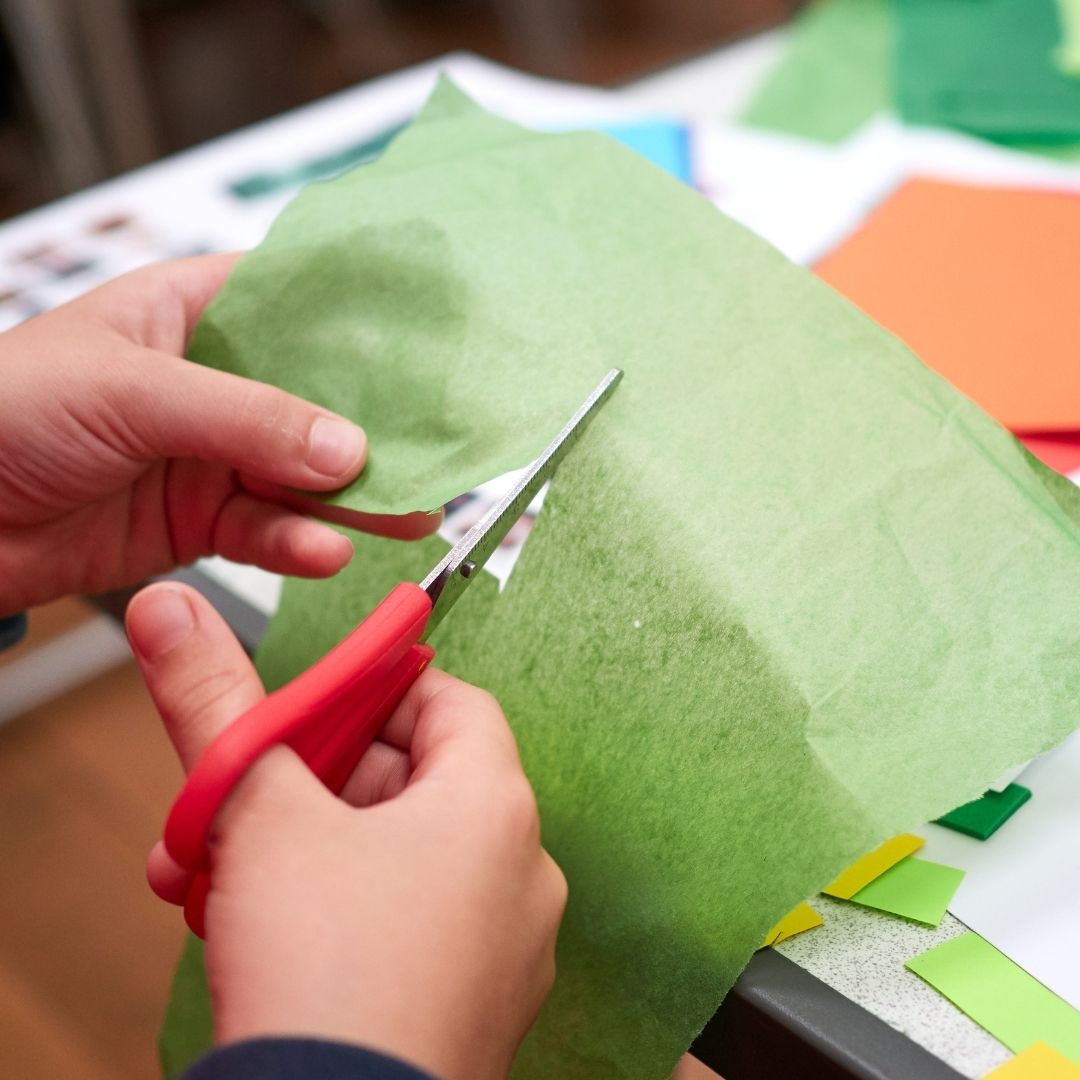It is so beneficial when parents of young students have some "tricks" up their sleeves and can teach and reinforce social-emotional skills at home and in life situations. There are lots of practical ways to help children navigate everyday interactions and feelings. Here are a few of the most common and needed "tricks" that help young students on their journey toward social-emotional health and intelligence:
Start a Positive Chain
One of the most important social-emotional lessons that young children can learn is that behavior is contagious. That is, one person's mood, words, and actions, has a direct impact on those around them. While kids may not be able to communicate "behavior is contagious," they know this principle well--when a sibling comes home from school grumpy or a parent comes home from work in a bad mood, that can quickly spread to the rest of the household.
To give age-appropriate language to this reality, we can teach kids about "positive chains" and "negative chains." A positive chain starts with a kind word, a friendly gesture, a small moment of generosity or something of the like, which can then be passed along to the next person by the first recipient. A negative chain is like the above mentioned scenario--a sibling comes home from school in a grumpy mood, says an unkind word to another, which can turn into a downward spiral for everyone involved.
There are two primary ways this can benefit kids:
- How to start a positive chain -- we can give our kids many examples of what words and actions can start a positive chain, but they often intuitively know what makes them feel positive and what might make others feel the same.
- How to stop a negative chain -- this can be a bit tricky for younger children to navigate. There are instances in which a child will approach another and say an unkind word. This would be the start of a negative chain, but we can teach kids to cut off negative chains quickly by simply walking away.
Avoid a Fight Circle
Fights are bound to break out when children--even close friends or siblings--spend educational or recreational time together. These types of situations can escalate quickly, even to physical confrontation, because of something we can teach kids to recognize as a fight circle. A fight circle refers to the cyclical nature of squabbles that escalate to more serious disagreements or even altercations. A fight circle may start with one unkind word, be reciprocated with a bit more intensity, and that intensity grows as it goes around the "circle" of interaction between two people at odds. There are three practical ways we can teach young ones to stop a fight circle before it intensifies:
1. Walk away. Again, this seems too simple, but it is effective and is easy for young ones to understand. The more parents can encourage their littles to practice this strategy, the more likely they are to apply it on their own!
2. Say, "I'm sorry you think that." This strategy works when someone says an unkind word like "Your hair is ugly" or "Jill is a better friend than you." The simple phrase "I'm sorry you think that" acknowledges what the other said without agreeing with it or fighting back and continuing the fight circle.
3. Give a compliment in response. This seems to diffuse others' anger quicker than anything else, thus stopping a potential fight circle.
Prioritize Problems
Children can be quick to panic at everyday life circumstances, but not every circumstance warrants a panicked response. Not being able to tie shoes, searching for a lost favorite blankie, taking a spelling test at school--what may seem mundane to us adults can strike panic in little hearts. It's so important for students to learn how to accurately diagnose and prioritize problems so as to not panic about everything. One way to do this is to explain to kids that there are "penny" problems, "quarter" problems, and "dollar" problems. If a child has some concept of money values, they can quickly gather that penny problems are small ones and dollar problems are bigger ones. We can emphasize, "We must spend our emotional energy on dollar problems."
Parents can practice this principle at home by providing real-life examples of what might constitute a penny problem in comparison with a quarter or dollar problem, then gently remind children in moments when they might be spending too much emotional energy on a penny or quarter problem.
Learn When and How to 'Join In'
When in the neighborhood or playing on the school playground or even in a classroom setting, it can be difficult for young ones to know how to appropriately join in an activity with peers. They may have a disposition that tends to shy away from attempting to join in, or they may try to assert and insert themselves in--both of which are typically unsuccessful. There are four simple steps kids can take when they want to join in with others:
1. Move closer. This might seem odd, but proximity matters in this process.
2. Just watch for a bit. In research done on social dynamics, a child first observing a group they want to join typically leads to an invitation to play.
3. If moving closer and observing a group does not yield an invitation to join, the next step is for a child to offer a compliment. "This looks like a fun game" or "I like the way you're playing!" are two possible compliments. (No more than two compliments--that can become too much!)
4. Ask to join. A soft ask like "Do you need another player?" can be most effective.
What To Do If Someone is Bothering You
Kids sometimes seem to enjoy bothering each other--often harmlessly--but these moments can escalate to an explosive (and/or whiny) "STOOOOP it" that can be hurtful and is rather ineffective for changing the situation. We can provide little ones with a more effective script for dealing with moments in which someone is bothering them. Rather than the knee-jerk reaction "STOOOOOP it," we can teach them and remind them to calmly turn and say, "I like you. I don't like it when you _____________________ (play with my hair, touch my backpack, etc.)." This message that affirms the person and specifically addresses the unwelcome behavior reinforces the relationship while expressing the immediate need/desire.
These are just a few strategies to help kids navigate some of the more common situations they find themselves in. Consistently communicating these strategies and applying them to appropriate situations as they arise can go a long way in helping our kids build those social-emotional skills.
/Logos/Horizontal%20Academic%20Logo%20for%20Light%20Backgrounds.png)
/Logos/Horizontal%20Academic%20Logo%20for%20Dark%20Backgrounds.png)



